This Sticky Chinese Pork Belly is one of my absolute favourite recipes on the blog. Check out my three step process for pork that’s meltingly tender, with a crispy exterior and gloriously sticky/sweet/spicy coating.
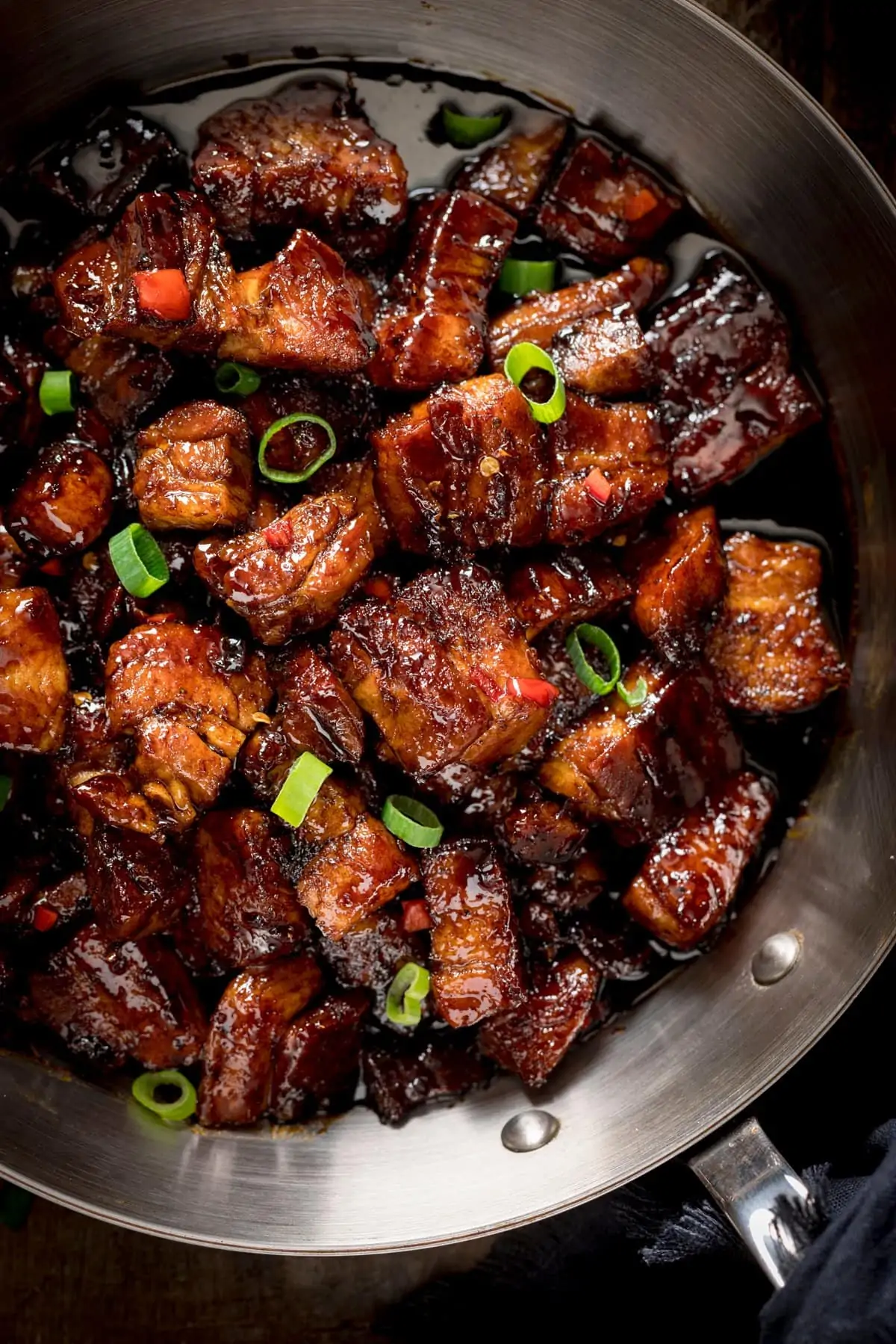
I wonder how many recipes I’ve published with sticky in the title…
Sticky chicken stir fry, Gingerbread cake with Sticky Whisky glaze, sticky Asian sea bass this sticky pork belly and AT LEAST ten others (just did a quick count). I’m all about the sticky. Just call me sticky Nicky.
Actually don’t. That sounds weird.
I sometimes like to kid myself and call it caramelized – like this ‘caramelized beef brisket‘. But at the end of the day, I just mean coated in some kind of sugar and then cooked until you reach the dark brown, shiny stage, creating an intense flavour that takes whatever you’ve just made to a whole new level. How could anything finished in that way not taste amazing?
For this recipe, the sticky layer is added right at the end. Don’t be fooled though. Just because the pork hasn’t been marinating for hours, doesn’t mean it’s not going to taste amazing (I confused myself with double negatives there, but I’m basically saying it tastes amazing even though we’re only glazing at the end).
📋 What do we need?
For the slow-cooked pork belly
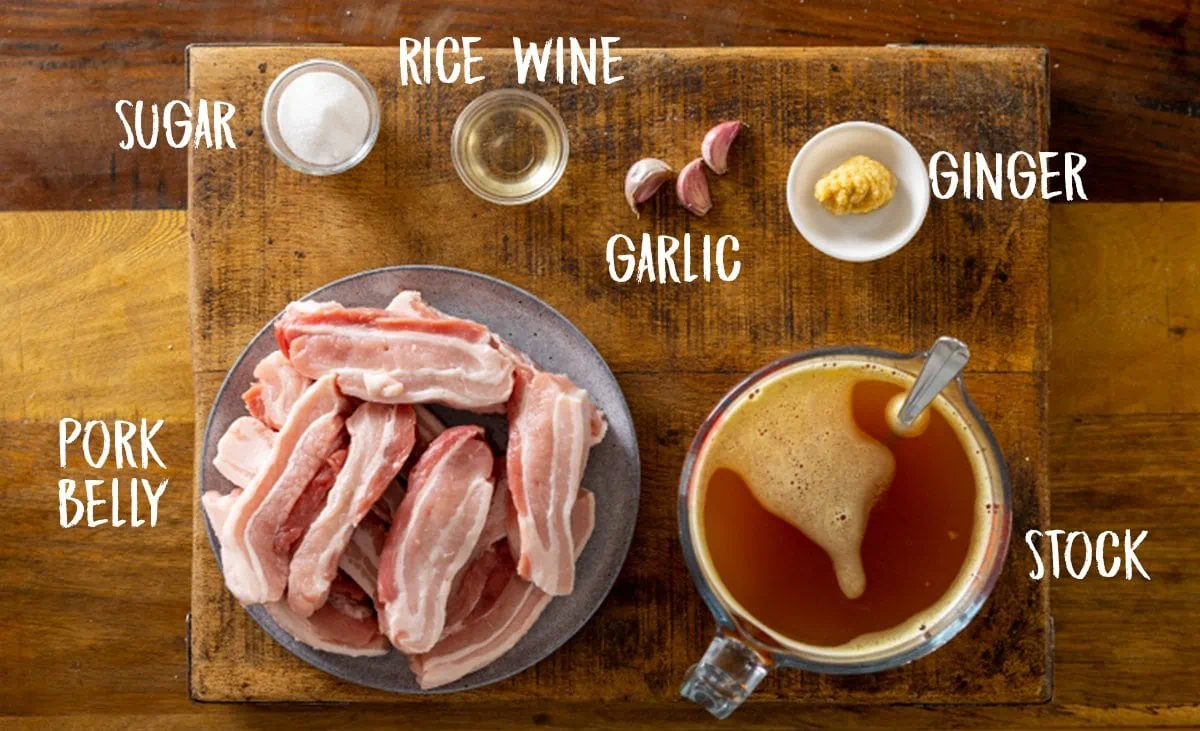
For the sticky glaze
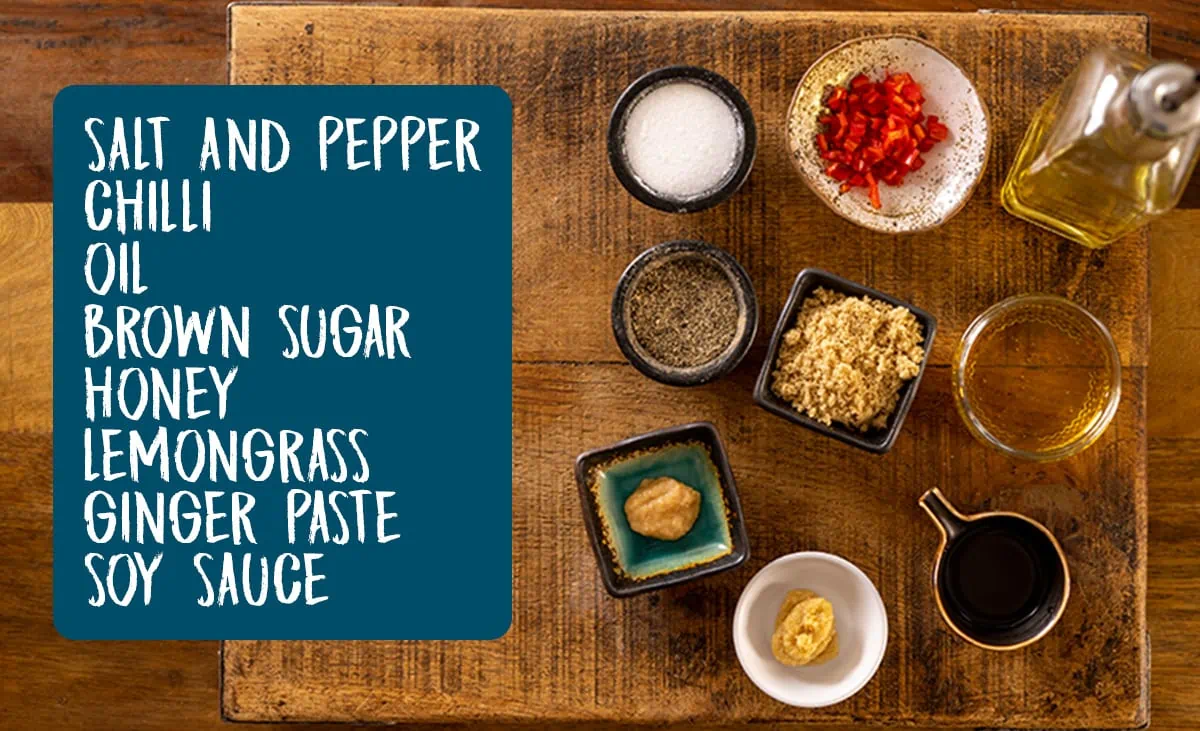
📺 Watch how to make it
Full recipe with detailed steps in the recipe card at the end of this post.
- This pork actually has three layers of flavour. The first coming from being slow-cooked in a pan for 2 hours with stock, garlic, ginger, rice wine and a little sugar:
- The second layer comes from being crisped in a pan with a little vegetable oil and seasoning (it’s actually hard not to just stop right here and eat it from the pan like this).
- The final layer coming from the soy/chilli/sugar/lemongrass and a couple of other ingredients that are stirred together, then poured over the fried pork, before bubbling away until thick and glossy.
👩🍳PRO TIP The fat can spit quite a bit at the frying stage so we use a splatter screen/guard (<<– affiliate link) to prevent hot oil spitting out all over the place.
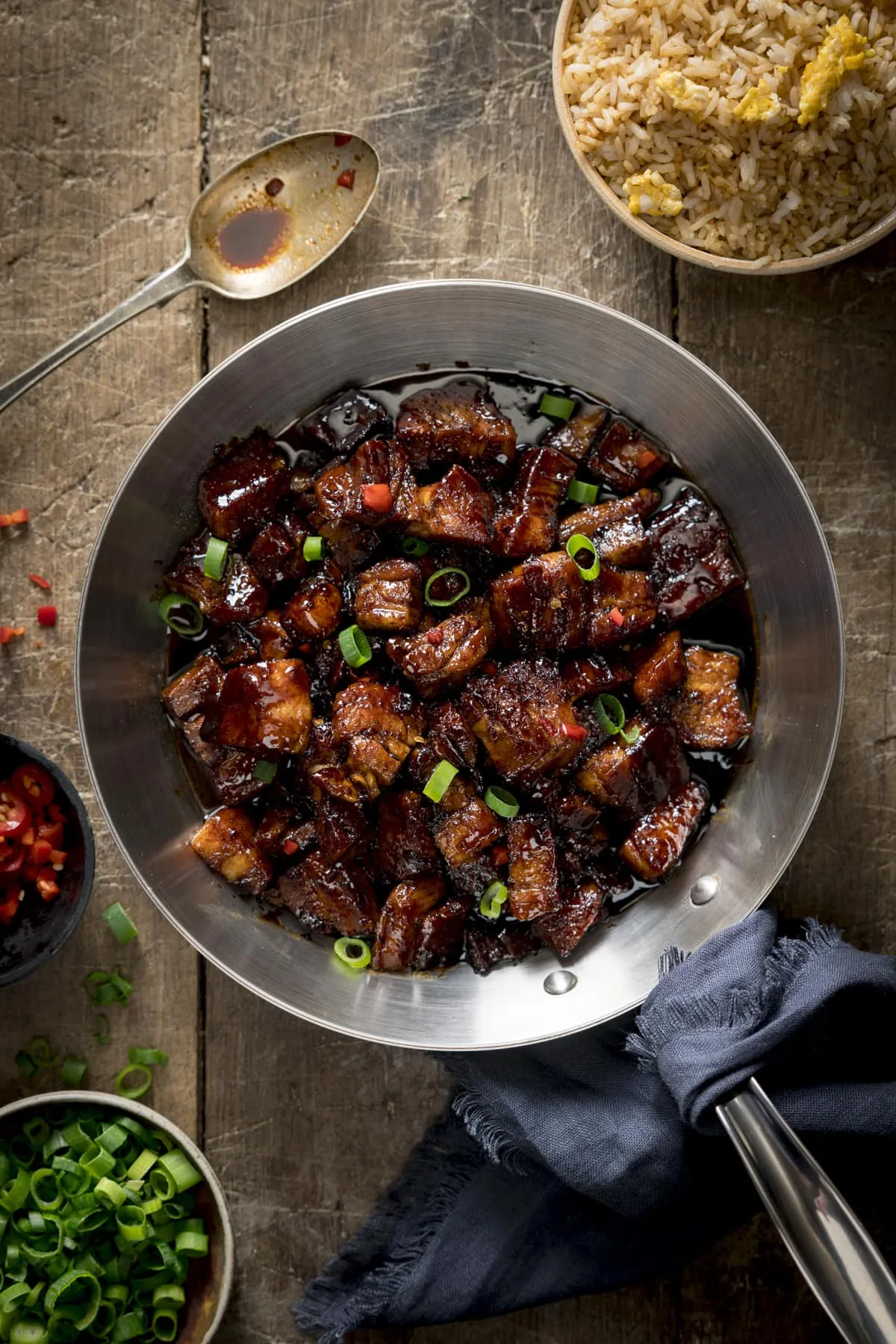
🍽️ What to serve it with
That’s it. Three layers of flavour in a simple recipe that really does take minimal effort.
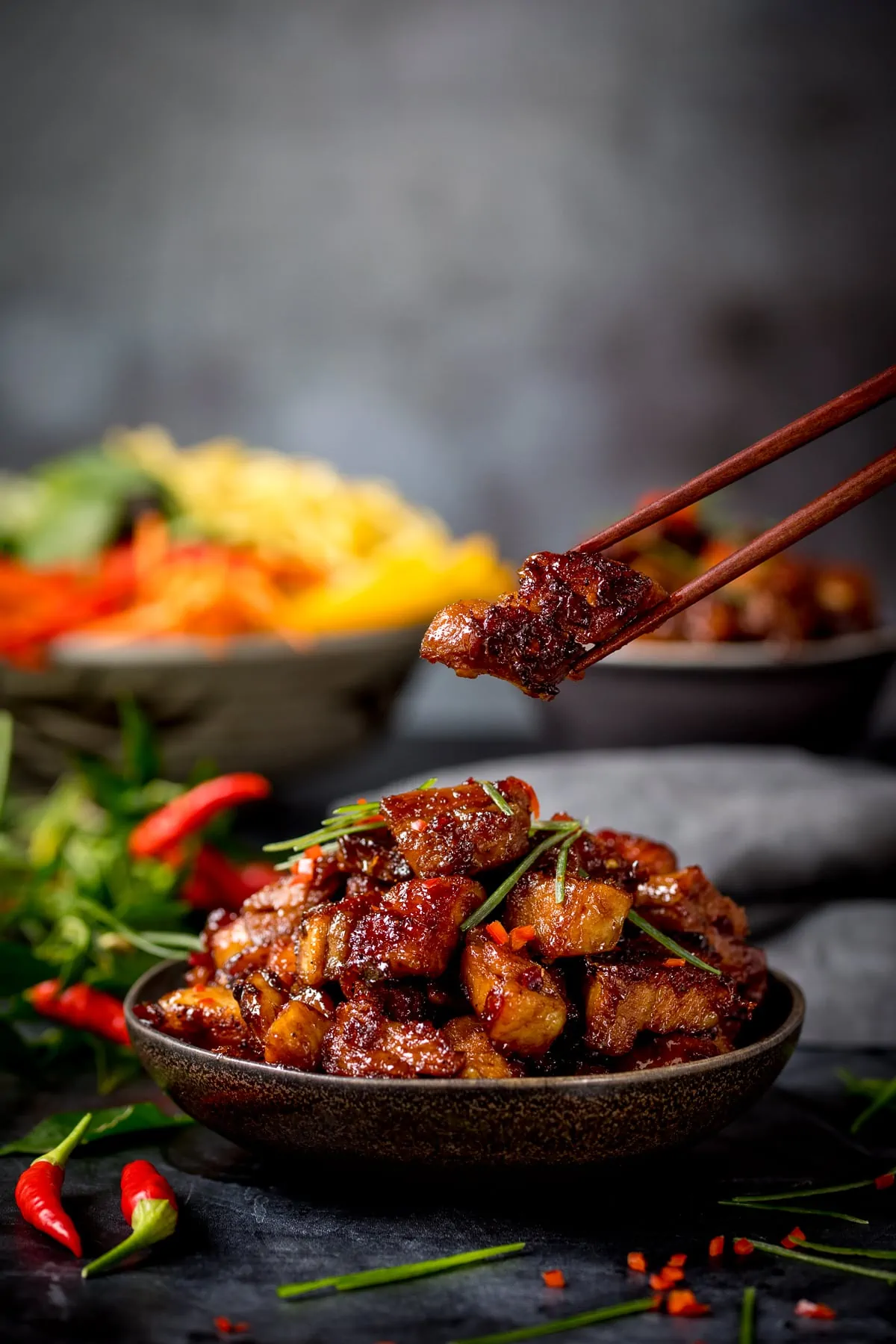
🍲 More fantastic Chinese recipes
Stay updated with new recipes!
Subscribe to the newsletter to hear when I post a new recipe. I’m also on YouTube (new videos every week) and Instagram (behind-the-scenes stories & beautiful food photos).
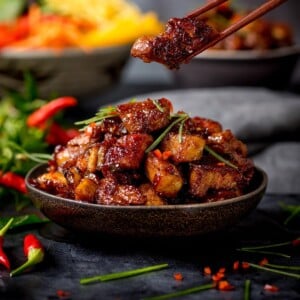
Sticky Chinese Pork Belly
Ingredients
Slow Cooked Pork Belly:
- 1 kg (2.2 lbs) rindless pork belly slices chopped in half (each piece being approx. the length of your index finger)
- 1 litre (4 1/4 cups) hot chicken stock
- 1 thumb sized piece of ginger peeled and minced (or 1 tbsp of ginger puree)
- 3 cloves garlic peeled and roughly chopped
- 1 tbsp rice wine
- 1 tbsp caster sugar
Glaze:
- 2 tbsp vegetable oil
- pinch salt and pepper
- 1 thumb-sized piece of ginger peeled and minced
- 1 red chilli finely chopped
- 2 tbsp honey
- 2 tbsp brown sugar
- 3 tbsp dark soy sauce
- 1 tsp lemon grass paste
To Serve:
- chopped spring onions
- chopped red chillies
Instructions
- Add pork belly slices, stock, ginger, garlic, rice wine, and sugar to a heavy-based pan. I use a cast iron casserole pan.1 kg (2.2 lbs) rindless pork belly slices, 1 litre (4 1/4 cups) hot chicken stock, 1 thumb sized piece of ginger, 3 cloves garlic, 1 tbsp rice wine, 1 tbsp caster sugar
- Bring to the boil, then place a lid on, turn down the heat and simmer for 2 hours.
- Turn off the heat, remove the pork from the pan and pat it dry using kitchen towels. You can reserve the liquid if you like (Perfect for a Thai or Chinese noodle soup).
- Chop the pork into bite sized chunks.
- In a small bowl, mix together 1 tbsp of the oil, along with a pinch of salt and pepper, ginger, chilli, honey, brown sugar, soy sauce, and lemongrass paste.pinch salt and pepper, 1 thumb-sized piece of ginger, 1 red chilli, 2 tbsp honey, 2 tbsp brown sugar, 3 tbsp dark soy sauce, 1 tsp lemon grass paste, 2 tbsp vegetable oil
- Add the remaining 1 tbsp of oil to a frying pan and heat over a medium-high heat.
- Add in the pork, along with a pinch of salt and pepper, and fry, turning regularly, until the pork starts to turn golden. Be careful as the oil can splatter at this stage (I recommend a splatter guard).pinch salt and pepper
- Now pour the glaze over the pork and continue to cook for a couple of minutes, turning the pork often, until the pork looks dark and sticky.
- Remove from the heat and serve. I like to top with a few spring onions and chopped chillies.chopped spring onions, chopped red chillies
Video
Notes
Replace the rice wine with sherry (usually gluten free, but best to check).
Also make sure you use gluten free stock. Vegetarian Option? I haven’t tried this with a meat-like alternative, but my Asian-style cauliflower wings make a great alternative. Can I use my slow cooker? Yes, you can do the first stage in the slow cooker. Cook on high for 4-5 hours or low for 6-7 hours. Keep an eye on the level of liquid and top up with a little more if needed. Nutritional information is per serving.
Nutrition
Nutrition information is automatically calculated, so should only be used as an approximation.
This post was first published in March 2015. Updated in October 2018 and then again in July 2022 with new photos, video and some housekeeping.
Some of the links in this post may be affiliate links – which means if you buy the product I get a small commission (at no extra cost to you). If you do buy, then thank you! That’s what helps us to keep Kitchen Sanctuary running. The nutritional information provided is approximate and can vary depending on several factors. For more information please see our Terms & Conditions.
Equipment:
In order to make this recipe you will need:
- A splatter guard/screen – to avoid hot fat spitting when frying the belly pork
- A good Kitchen knife. In the video I use my Leiths knife however I have recently bought this Dalstrong one and love it.
- Chopping Board
- Cast Iron Casserole Dish
- Measuring Jug
- Fying Pan/Skillet or a Wok.
- Wooden or Silicon Coated Spoons. We have just bought these and love them.
- A small mixing bowl to mix the glaze ingredients in. Instead of a mixing bowl we use loads of these for mixing, prepping, and serving.
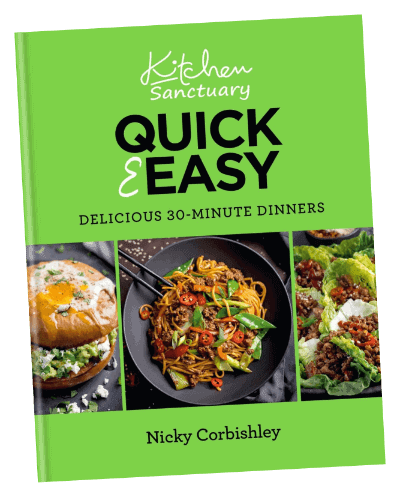






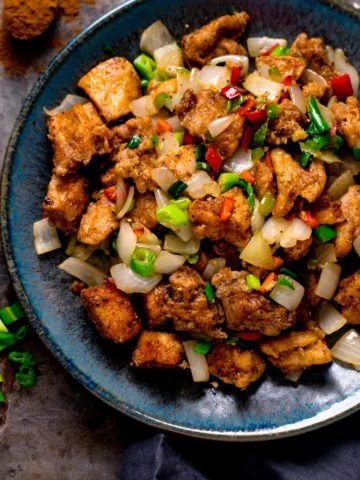
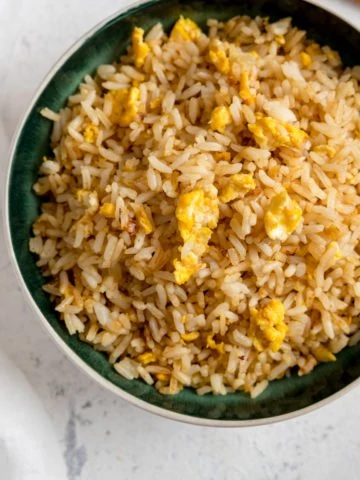
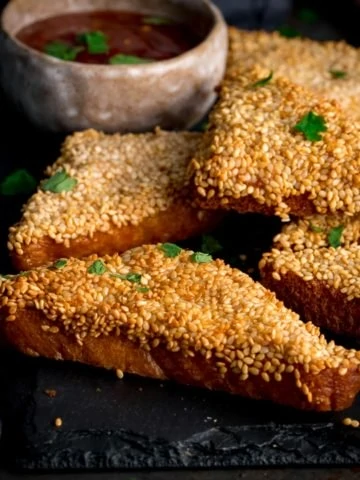

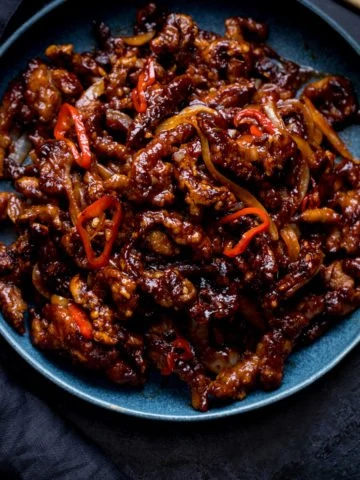

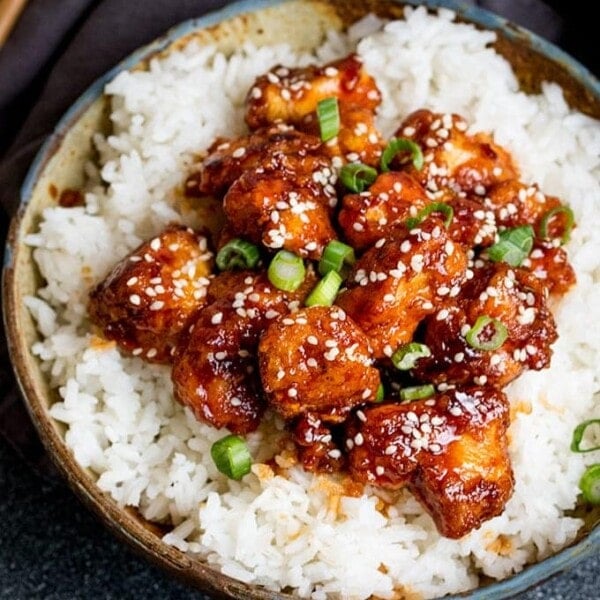



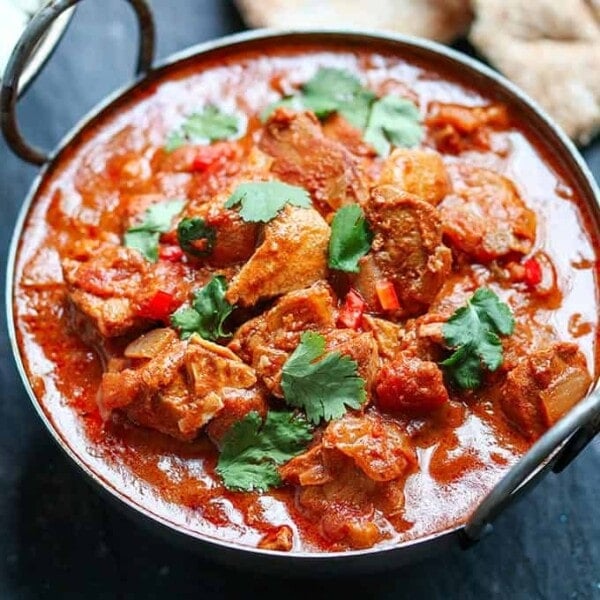
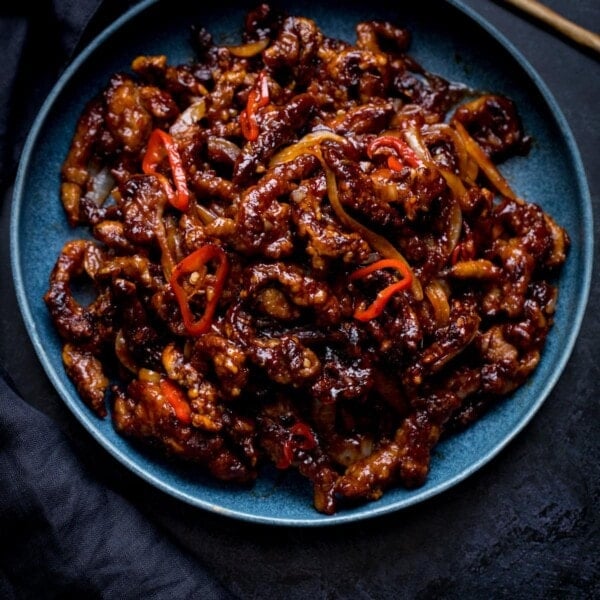

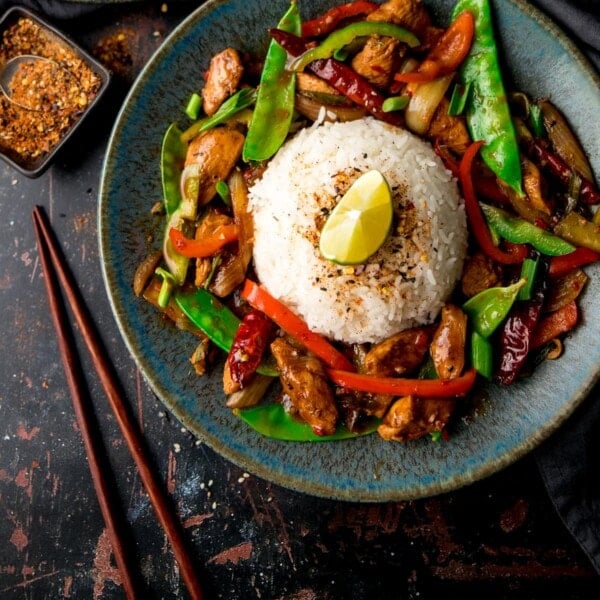







Made this tonight and I’m very impressed.
However, not sure about the frying stage – the meat did not get a golden colour.
However, the taste at the end was wonderful. I think this could become a favourite.
Thank you.
Thanks Andrew, glad you enjoyed it.
Re: the golden colour, I find it helps to ensure the meat isn’t still wet – from the slow-cooked stage (a quick blot with some kitchen towel should help). Also, use a high heat and try not to over crowd the pan. Hope that helps 🙂
Hi just wondering if you slice up the red chilli for the glaze?
Hi Nicky.
We are doing a variation of this for a cooking competition. But we only have an hour.. do you think the pork belly would do well in a pressure cooker 30-40 min then cook in the skillet?
Hi Rachel, Apologies for the late reply. I think you could do the slow-cooked bit in 40 minutes in the pressure cooker, but probably no less than that if you want it lovely and tender. Good luck 🙂
I had never cooked pork belly before and I was excited to try this recipe! I used pork belly rashers with the bone in, slow cooked and it was falling beautifully apart I didn’t even need a knife! I could also not find any rice wine in the stores tonight here in South Africa, so I used a sweet light red wine instead, after reading it could be a good substitute. I will have a better look for the rice wine next time, because this was the best pork I have ever eaten! Thank you <3 <3
Thanks for letting know how it went Ruth – I’m so glad you like it 😀
Hi Nicky I am just about to text do this recipe I like it when it’s crispy x do I leave the rind for it to be so ? X
Hi Lorraine,
I normally remove the rind for this recipe, as it’s supposed to be a tender, fall-apart type of way of serving it, rather than crispy.
If it were me, I’d remove the rind and cook the rest of the pork belly as per the recipe, then score, salt and cook the rind in a hot oven for a crispy-crackling addition to the dish.
Hope that helps 🙂
Nicky, I have just discovered your recipes and I’m so excited to try some of them. Can you suggest a recipe for the cooking broth used for slow cooking the pork? Also, could you use part of that liquor to put back in when making the glaze?
Thank you so much!
Hi Chris,
I wouldn’t use the cooking liquor as part of the glaze, as it may prevent the glaze from thickening and getting sticky.
You could use it for ramen like this one: https://www.kitchensanctuary.com/spicy-pork-ramen-noodle-soup/, just boil the cooking liquor up for 10 minutes with: 2 tbsp mirin, 3 tbsp soy sauce, 2 tbsp Gochujang Korean sauce (this can be found on the speciality aisle of larger supermarkets) and
1 red chilli, roughly sliced. Then you can pour the resulting stock over noodles and serve with cooked meat – such as chicken – and veggies.
You could also use it to replace the stock in this peanut pork dish: https://www.kitchensanctuary.com/thai-style-peanut-pork-broccoli/
Thank you very much. Making the sesame chicken tonight. Having just discovered your website I am extremely impressed by the recipes, but even more so at your informative, quick replies!
Hi this recipe looks yummy thanx for putting it up I can’t wait to try it as I love pork belly and pork shoulder, the fat is the best bit if done right. Anyway i always use this recipe which is yummy but the sauce is very strong in vinegar which I like but not every1 does so sometimes just change the sauce but here’s that recipe incase u ever want to try it. http://thewoksoflife.com/2015/12/sweet-and-sour-pork/
Had this craving for a week now and giving it a go today. Looks awesome to say the least!
wow… made this for the first time tonight and it is delicious! with rice and steamed green beans, I doubled the sauce recipe because I had a bit more pork. so good!
Hi Nicky, in the picture of the glaze it looks like there is a fair bit of liquid in the pan, but the amount of glaze ingredients would suggest there would be less, does liquid come out of the met well searing? just want to clarify so i dont make it to dry!
Hi Mark,
The soy sauce, oil, honey and sugar mixture is quite thin mixture, which will cover the bottom of the pan, then bubble as the sugar starts to melt and caramelize. So it looks like there’s some liquid in the pan. This will thicken and coat the pork after a minute or two of bubbling, so there won’t be any liquid left in the pan when you dish up. You can double the glaze ingredients if you want more sauce, it will take a little longer to thicken though. Hope that helps!
Hi, I just found your blog and decided to try this recipe. It was awesome! Both my kids loved it, as did I. We couldn’t even leave left-overs for my lunch, it just all went! I didn’t plan my cooking night that well, so had to do step 1 in the pressure cooker instead, 40 mins and everything was just perfect 🙂
Thanks so much, looking forward to trying the next one.